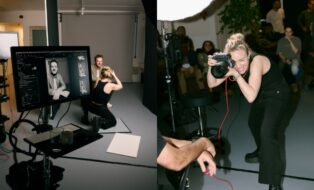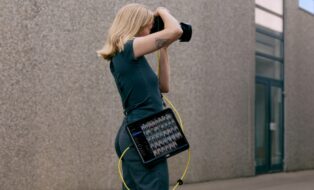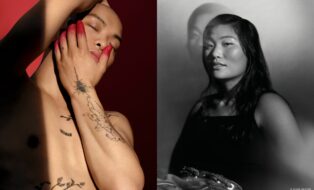We attended the postgraduate photography show at LCC to present our RAW Talent Award to three creatives. Goda Kraštinaitytė stood out with her surreal and tech-driven imagery. Journeying from advertising and tech to photography, she showcased a project challenging the connection between spirituality and technology — a paradoxical relationship, according to herself.
We spoke with Goda about her willingness to keep experimenting and drawing inspiration from surrealist sources like Twin Peaks. She also underlines the importance of persevering – never letting go, even if unsatisfied. Consistency, practice, and hard work are the key to breaking through.
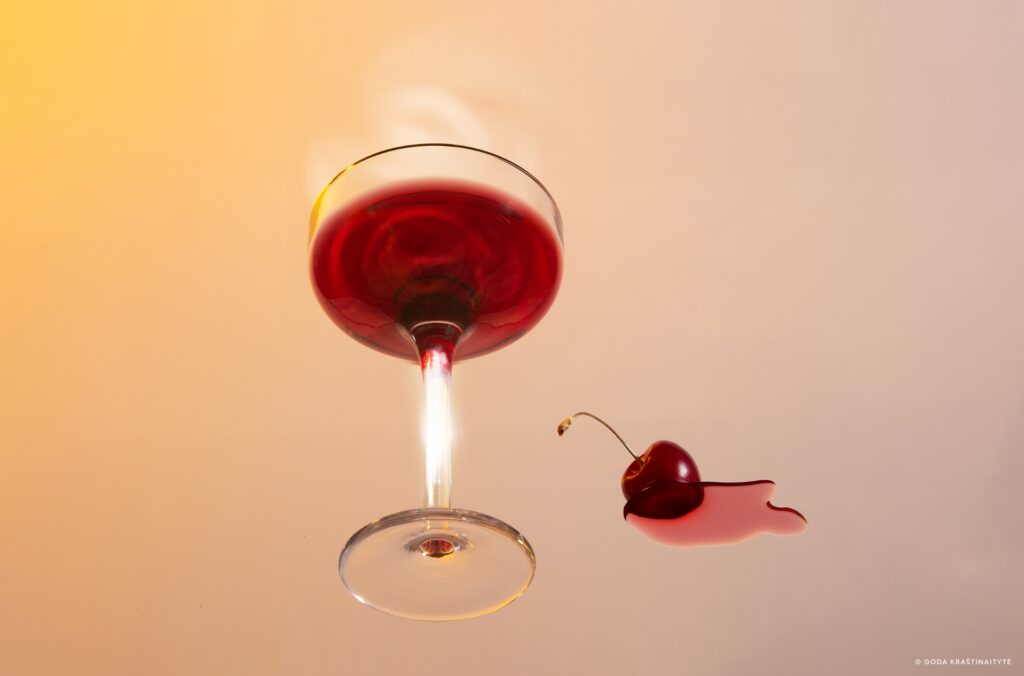
How did you first get into photography?
I got my first point-and-shoot camera when I was 13. Since then, I have experienced all my vacations looking through the camera viewfinder because I just couldn’t put my camera down. After I got my first job at an advertising agency as a Content Creator, photography never left my life professionally.
What type of photography do you like to shoot the most?
I like working with objects and creating sets in the studio. Bending reality to create something born in my imagination is very satisfying. Doing that in a studio with music playing in the background is always a meditative experience.
Congratulations on your project. How did you come up with the idea for it?
Thank you. I wanted to do something about the current mental health crisis in society. I was also greatly inspired by the show Twin Peaks. This all resulted in a surrealist project that questions our reality and distance from spiritual practices.
What did you enjoy the most when working on the project?
Having the freedom to work without the boundaries of a marketing campaign, tight deadlines, and experimenting with different techniques was great fun. The most challenging part was finding the right visual language for the project.
What motivated your surrealist and digital approach?
While working for a tech company, I was immersed in the world of analysis, optimization, data-driven decisions, and AI-powered tools. I saw many people in the industry also use the same approach in their personal lives. Whether we work in tech or not, we increasingly approach our lives as a technology project. Optimizing our sleep, counting steps, calculating protein intake, tracking insulin levels, and measuring our temperature to record hormone levels are just a few examples. It’s quite paradoxical that I’m using a highly digital process to draw attention to spirituality with my work, but that is actually my point – we can use technological and scientific advances to our advantage but still prioritize and cultivate what’s most important to our human nature – spiritual practices, traditions, values, connection to other humans and self.
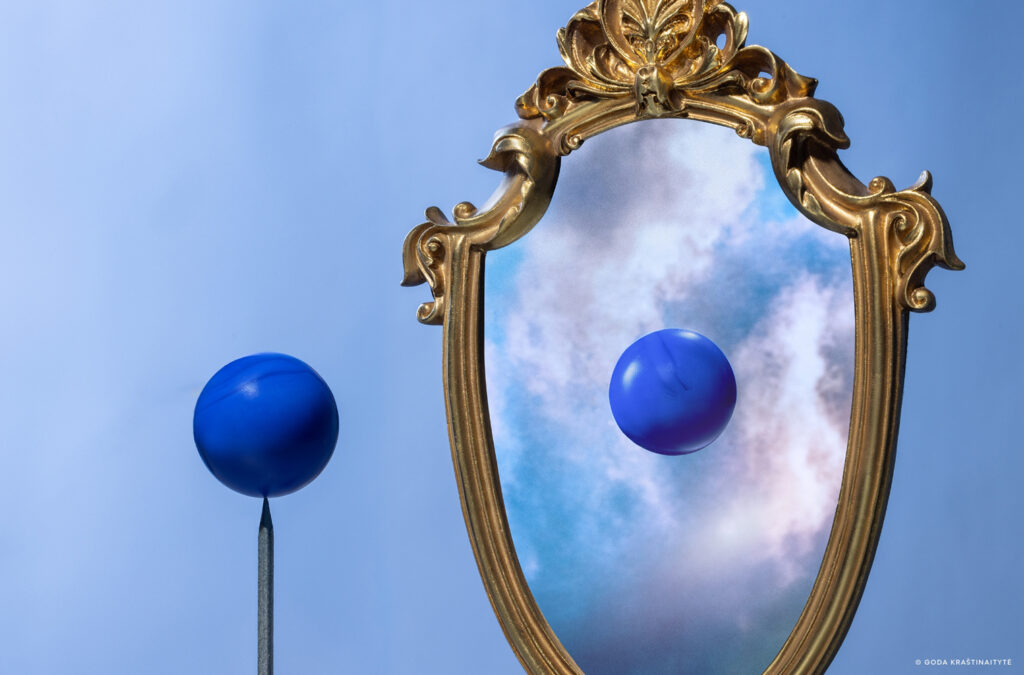
How do you see the importance of scientific data vs. creativity in photography?
It all goes hand in hand. It’s important to be well researched on a topic you’re working with. Scientific data is essential in all areas of our lives, photography included, but there are other equally key elements beyond data that art helps bring attention to. It’s a relationship between the two.
How would you describe your photographic voice?
It’s a long process, and I’m still on the journey of exploring it. Currently, my style is trying to convey the feeling of uncanny, out of this world. It’s dreamlike, but in my photography world, this is a good dream that you want to keep dreaming. That’s why I use vibrant, happy colors and lots of light in my images.
Can you tell us about a unique moment that shaped your style or approach?
I wish there had been a light bulb moment and an exciting story to tell but to be honest, it’s just experimentation and hard work that led me to where I am now. You try and fail many times – only my MacBook memory storage can tell how many unpublished images I have on it – and sometimes you succeed in creating something you and others like.
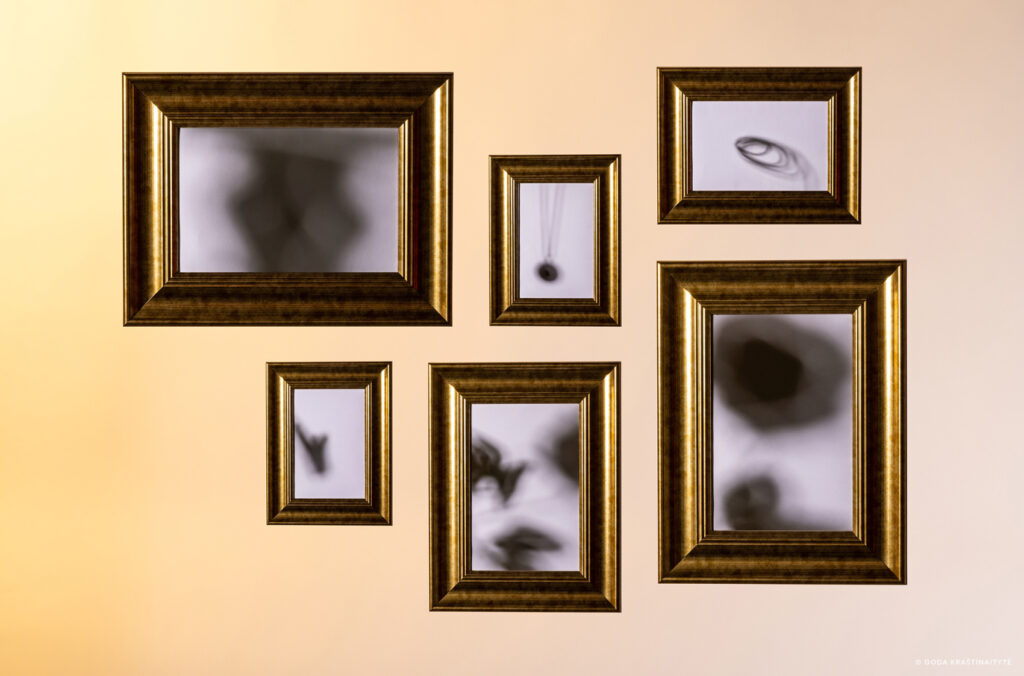
How did the education at LCC impact and help your journey as a photographer?
Studying at LCC among great talent and tutors well-known in photography has been a privilege. Having someone of a high caliber direct you in the right direction, being exposed to great artists regularly, and studying in London – a city full of galleries and events – was a life-changing experience for me. It really shaped my style and future career path.
What role does our software play in your workflow?
Capture One is the industry standard, so I have used it for personal and commercial projects for some years. My work is all about the details, so tethering while I shoot is extremely important. I spend much time on each still-life image, perfecting my composition detail by detail until I get the desired result. Seeing each change live on screen and organizing many pictures as I go is crucial.
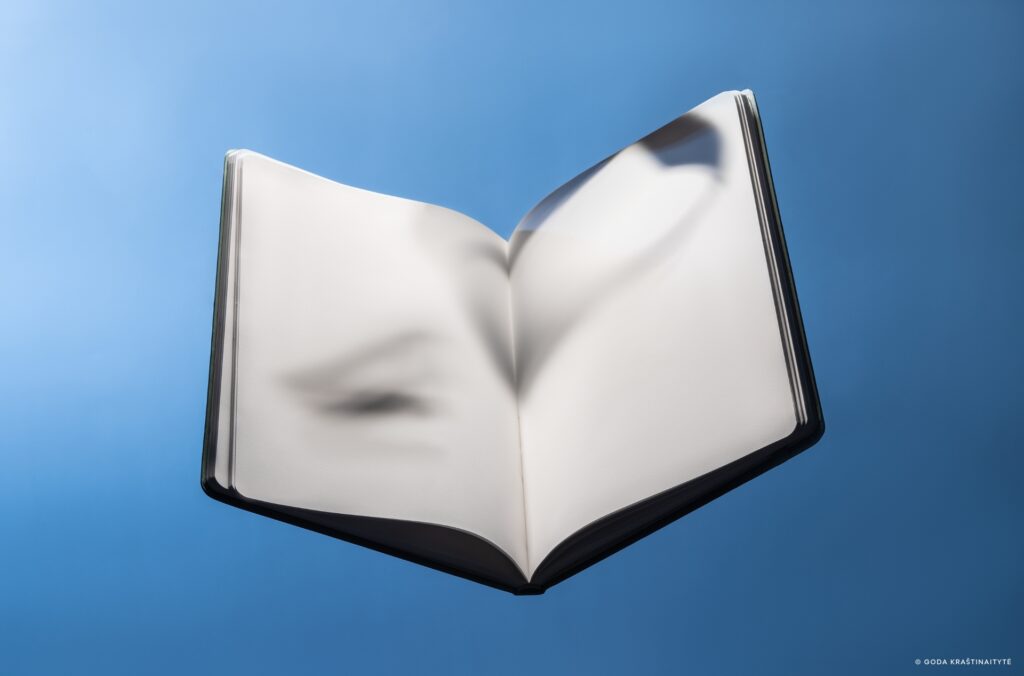
What are some of the photographers you look up to?
I look up to photographers like Aaron Tilley, Jack Davidson, Bobby Doherty, and Aleksandra Kingo. I have some non-photographer idols, such as Sarah Illenberger and David Lynch.
You’ve just graduated. What are your plans for the near future?
Keep taking pictures! And hopefully, get paid for it. I have lots of new ideas for future projects and am still working on expanding my portfolio.
What do you wish someone told you when you decided on your career?
Read more, go into art galleries more, and explore other photographers’ work because this will shape your style and inspire your projects. Keep going even if you aren’t pleased with your work because everyone has to start somewhere, and only consistency and practice will improve your work.
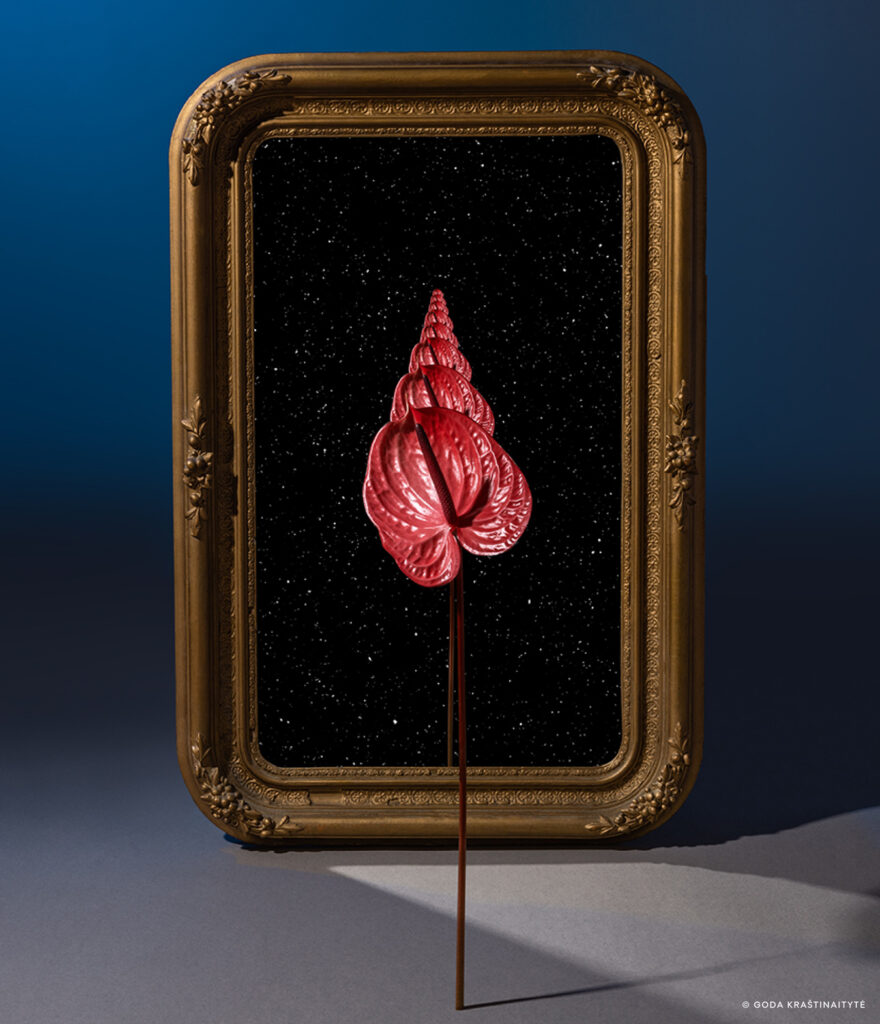
See more of Goda’s work on her website.
Are you a student? Register here and get a 65% discount on Capture One Pro
